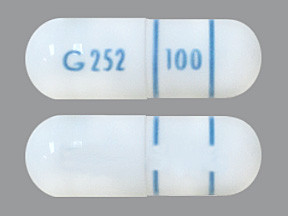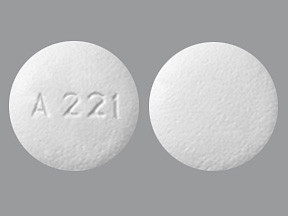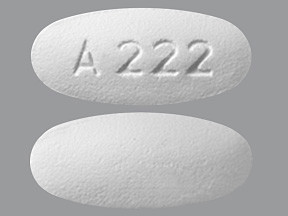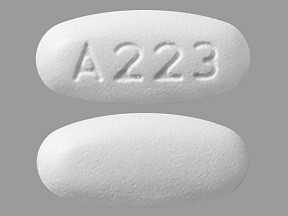TRAMADOL EXTENDED-RELEASE - ORAL
PHONETIC PRONUNCIATION: (TRAH-muh-dall)
COMMON BRAND NAME(S): ConZip, Ryzolt, Ultram ER
GENERIC NAME(S): tramadol HCl
Uses
USES: See also Warning section. This medication is used to help relieve severe ongoing pain. Tramadol is similar to opioid (narcotic) analgesics. It works in the brain to change how your body feels and responds to pain.
How to use TRAMADOL EXTENDED-RELEASE - ORAL
HOW TO USE: Read the Medication Guide provided by your pharmacist before you start taking tramadol and each time you get a refill. If you have any questions, ask your doctor or pharmacist. Take this medication on a regular schedule as directed by your doctor, usually once daily (every 24 hours). If you have nausea, it may help to take this drug with food. Ask your doctor or pharmacist about other ways to decrease nausea (such as lying down for 1 to 2 hours with as little head movement as possible). Do not crush, chew, or dissolve extended-release tablets or capsules. Doing so can release all of the drug at once, increasing the risk of side effects or overdose. Swallow whole without crushing or chewing. The dosage is based on your medical condition and response to treatment. To reduce your risk of side effects, your doctor may direct you to start this medication at a low dose and gradually increase your dose. Follow your doctor's instructions carefully. Do not increase your dose, take the medication more frequently, or take it for a longer time than prescribed. Properly stop the medication when so directed. Before you start using this medication, ask your doctor or pharmacist if you should stop or change how you use your other opioid medication(s). Other pain relievers (such as acetaminophen, ibuprofen) may also be prescribed. Ask your doctor or pharmacist about using tramadol safely with other drugs. This medication may cause withdrawal reactions, especially if it has been used regularly for a long time or in high doses. In such cases, withdrawal symptoms (such as restlessness, watering eyes, runny nose, nausea, sweating, muscle aches) may occur if you suddenly stop using this medication. To prevent withdrawal reactions, your doctor may reduce your dose gradually. Consult your doctor or pharmacist for more details, and report any withdrawal reactions right away. When this medication is used for a long time, it may not work as well. Talk with your doctor if this medication stops working well. Though it helps many people, this medication may sometimes cause addiction. This risk may be higher if you have a substance use disorder (such as overuse of or addiction to drugs/alcohol). Take this medication exactly as prescribed to lower the risk of addiction. Ask your doctor or pharmacist for more details. Tell your doctor if your pain persists or worsens.
Side Effects
Precautions
Interactions
Overdose
Images

- color
- white
- shape
- oblong
- imprint
- G 252, 100

- color
- white
- shape
- oblong
- imprint
- G 253, 200

- color
- white
- shape
- oblong
- imprint
- G 254, 300
Reviews
Faq for TRAMADOL EXTENDED-RELEASE - ORAL
Tramadol extended-release is an oral medication that contains tramadol, which is a centrally acting synthetic opioid analgesic. It is used to treat moderate to severe pain in adults.
Tramadol extended-release works by binding to opioid receptors in the brain, blocking pain signals, and increasing the levels of serotonin and norepinephrine. This results in pain relief and an overall calming effect.
Common side effects of tramadol extended-release include dizziness, drowsiness, nausea, constipation, headache, and dry mouth. It is important to inform your doctor if you experience any severe or persistent side effects.
Tramadol extended-release has the potential for abuse and addiction, especially if misused or taken in higher doses than prescribed. It is important to take tramadol extended-release only as directed by your healthcare provider to minimize the risk of addiction.
Tramadol extended-release should be taken exactly as prescribed by your doctor. It is usually taken once a day, with or without food, and should be swallowed whole without chewing, crushing, or splitting the tablet.
If you miss a dose of tramadol extended-release, take it as soon as you remember. However, if it is close to the next scheduled dose, skip the missed dose and resume your regular dosing schedule. Do not double the dose to make up for a missed one.
Tramadol extended-release can interact with other medications, including other opioids, antidepressants, sedatives, muscle relaxants, and certain antibiotics. It is important to inform your doctor about all the medications you are currently taking to avoid potential drug interactions.
Tramadol extended-release should be used with caution during pregnancy and breastfeeding. It is recommended to consult with your doctor before taking this medication if you are pregnant or breastfeeding to weigh the potential risks and benefits.
Tramadol extended-release should not be stopped suddenly without medical guidance. Abrupt discontinuation of the medication can cause withdrawal symptoms. Your doctor will gradually reduce your dose to safely stop tramadol extended-release.
Warning
WARNING: Tramadol has a risk for abuse and addiction, which can lead to overdose and death. Tramadol may also cause severe, possibly fatal, breathing problems. To lower your risk, your doctor should have you take the smallest dose of tramadol that works, and take it for the shortest possible time. See also How to Use section for more information about addiction. The risk for severe breathing problems is higher when you start this medication and after a dose increase, or if you take the wrong dose/strength. Taking this medication with alcohol or other drugs that can cause drowsiness or breathing problems may cause very serious side effects, including death. Also, other medications can affect the removal of tramadol from your body, which may affect how tramadol works. Be sure you know how to take tramadol and what other drugs you should avoid taking with it. See also Drug Interactions section. Get medical help right away if any of these very serious side effects occur: slow/shallow breathing, unusual lightheadedness, severe drowsiness/dizziness, difficulty waking up. Keep this medicine in a safe place to prevent theft, misuse, or abuse. If someone accidentally swallows this drug, get medical help right away. Before using this medication, women of childbearing age should talk with their doctor(s) about the risks and benefits. Tell your doctor if you are pregnant or if you plan to become pregnant. During pregnancy, this medication should be used only when clearly needed. It may slightly increase the risk of birth defects if used during the first two months of pregnancy. Also, using it for a long time or in high doses near the expected delivery date may harm the unborn baby. To lessen the risk, take the smallest effective dose for the shortest possible time. Babies born to mothers who use this drug for a long time may develop severe (possibly fatal) withdrawal symptoms. Tell the doctor right away if you notice any symptoms in your newborn baby such as crying that doesn't stop, slow/shallow breathing, irritability, shaking, vomiting, diarrhea, poor feeding, or difficulty gaining weight. Children younger than 12 years should not use products that contain tramadol. Children between 12 and 18 years old should not use tramadol after certain surgeries (including tonsil/adenoid removal). Also, tramadol use is not recommended for children between 12 and 18 years old who are obese or have breathing problems. Some children are more sensitive to tramadol and have had very serious (rarely fatal) breathing problems such as slow/shallow breathing (see also Side Effects section). Talk with your doctor or pharmacist about the risks and benefits of this medication.
Disclaimer
IMPORTANT: HOW TO USE THIS INFORMATION: This is a summary and does NOT have all possible information about this product. This information does not assure that this product is safe, effective, or appropriate for you. This information is not individual medical advice and does not substitute for the advice of your health care professional. Always ask your health care professional for complete information about this product and your specific health needs.



No Reviews Yet